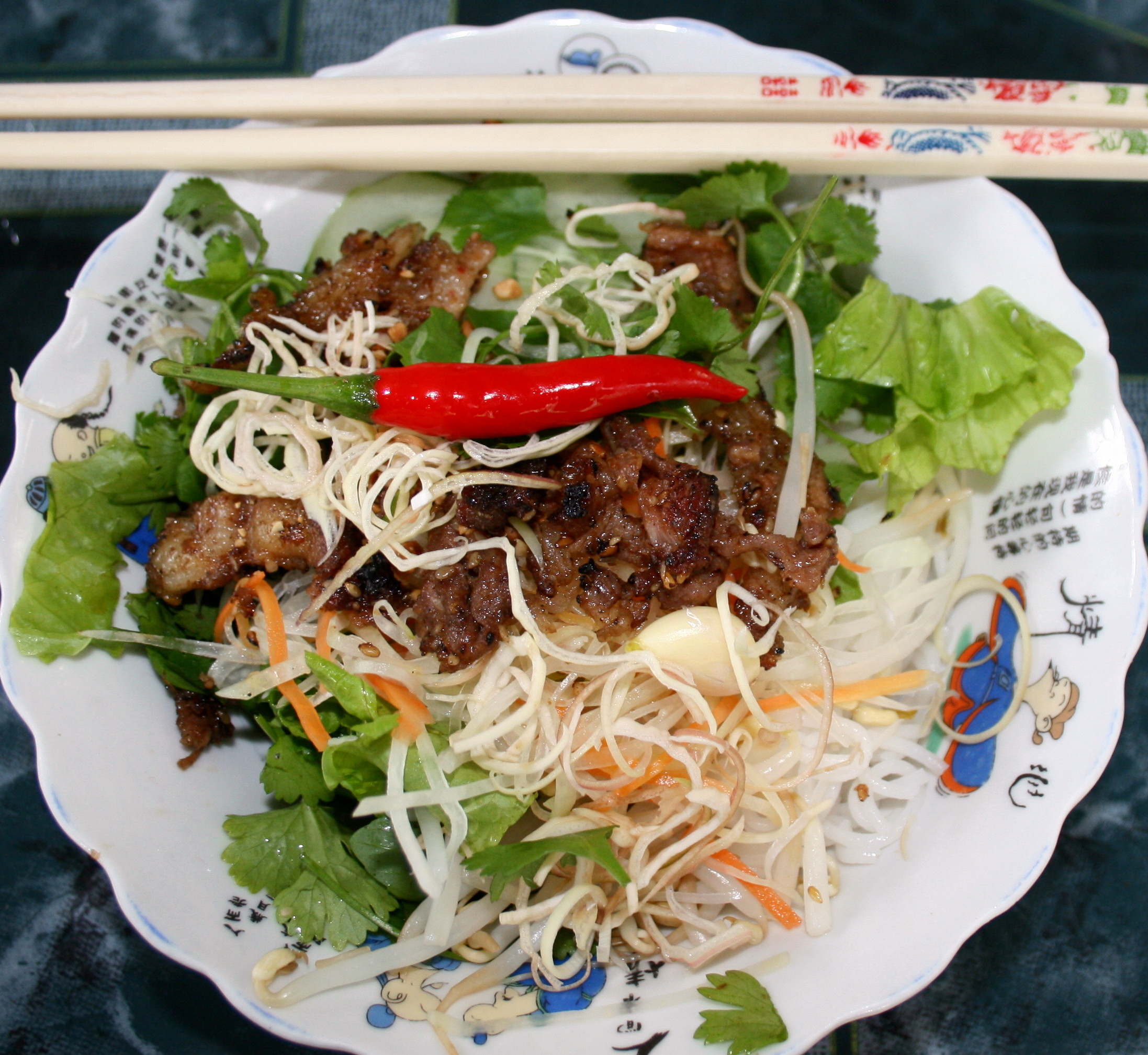|
Bakmi
''Bakmi'' ( jv, ꦧꦏ꧀ꦩꦶ, bakmi) or ''bami'' ( th, บะหมี่, ) is a type of wheat based noodles derived from Chinese cooking tradition. It was brought to Indonesia by Chinese immigrants from Southern Chinese provinces like Fujian. It is typically prepared seasoned in soy sauce and topped with pork products, which is often substituted for other protein sources in predominantly Muslim Indonesia. Chinese-style wheat noodles has become one of the most common noodle dishes, especially in Southeast Asian countries which have significant Chinese populations and known by various names. Chinese-style wheat noodles is known as ''bakmi'' in Indonesia, where it has been adapted to more closely align with the local tastes and adapted in Javanese and Indo cuisine. ''Bakmi'' is between Chinese style wheat noodles and Japanese udons in thickness, and there are several variants of ''bakmi'' in Indonesia. The name ''bakmi'' literally translates to "meat noodle", wher ... [...More Info...] [...Related Items...] OR: [Wikipedia] [Google] [Baidu] |
Mie Ayam
Mie ayam, mi ayam, or bakmi ayam (Indonesian for 'chicken bakmi', literally chicken noodles) is a common Indonesian dish of seasoned yellow wheat noodles topped with diced chicken meat ('' ayam''). It is derived from culinary techniques employed in Chinese cuisine. In Indonesia, the dish is recognized as a popular Chinese Indonesian dish, served from simple travelling vendor carts frequenting residential areas, humble street-side '' warung'' to restaurants. Preparation and serving The yellow wheat noodle is boiled in water until it achieves an al dente texture and mixed in a bowl with cooking oil, soy sauce, and garlic. The oil coats the noodle in order to separate the threads. The oil can be chicken fat, lard, or vegetable oil. The chicken meat is diced and cooked in soy sauce and other seasonings including garlic. The chicken meat might also be cooked with mushrooms. The seasoned chicken and mushroom mixture is placed on the noodles, and topped with chopped spring onions ... [...More Info...] [...Related Items...] OR: [Wikipedia] [Google] [Baidu] |
Javanese Cuisine
Javanese cuisine is the cuisine of Javanese people, a major ethnic group in Indonesia, more precisely the province of Central Java, Yogyakarta and East Java. Definition Javanese cuisine refers exclusively to the cuisine of Javanese people, which is often brought to other regions and countries by Javanese diaspora or foreign descents who have lived in Java. There are several native ethnic groups who live on the island of Java (Sundanese, Madurese, Betawi, etc.) as well as other peoples of foreign descents. In Indonesian language, Javanese refers to people of Javanese ethnic background. Javanese cuisine is thought to be sweet, since this is the taste traditionally preferred in Yogyakarta. However, Javanese regions do not only include Yogyakarta. On the northern and northeastern of Central Java, for instance, the taste tend to be salty and spicy. In East Java, the level of spiciness increases. Today, as Javanese people become more mobile and may move to different regions ... [...More Info...] [...Related Items...] OR: [Wikipedia] [Google] [Baidu] |
Noodle
Noodles are a type of food made from unleavened dough which is either rolled flat and cut, stretched, or extruded, into long strips or strings. Noodles are a staple food in many cultures (for example, Chinese noodles, Filipino noodles, Indonesian noodles, Japanese noodles, Korean noodles, Vietnamese noodles, and Italian pasta) and made into a variety of shapes. While long, thin strips may be the most common, many varieties of noodles are cut into waves, helices, tubes, strings, or shells, or folded over, or cut into other shapes. Noodles are usually cooked in boiling water, sometimes with cooking oil or salt added. They are often pan-fried or deep-fried. Noodles are often served with an accompanying sauce or in a soup. Noodles can be refrigerated for short-term storage or dried and stored for future use. Etymology The word for noodles in English, was borrowed in the 18th century from the German word ''Nudel''. History Origin The earliest written record of noodle ... [...More Info...] [...Related Items...] OR: [Wikipedia] [Google] [Baidu] |
Indonesian Cuisine
Indonesian cuisine is a collection of various regional culinary traditions that formed the archipelagic nation of Indonesia. There are a wide variety of recipes and cuisines in part because Indonesia is composed of approximately 6,000 populated islands of the total 17,508 in the world's largest archipelago,"Indonesian Cuisine." . Accessed July 2011. [...More Info...] [...Related Items...] OR: [Wikipedia] [Google] [Baidu] |




